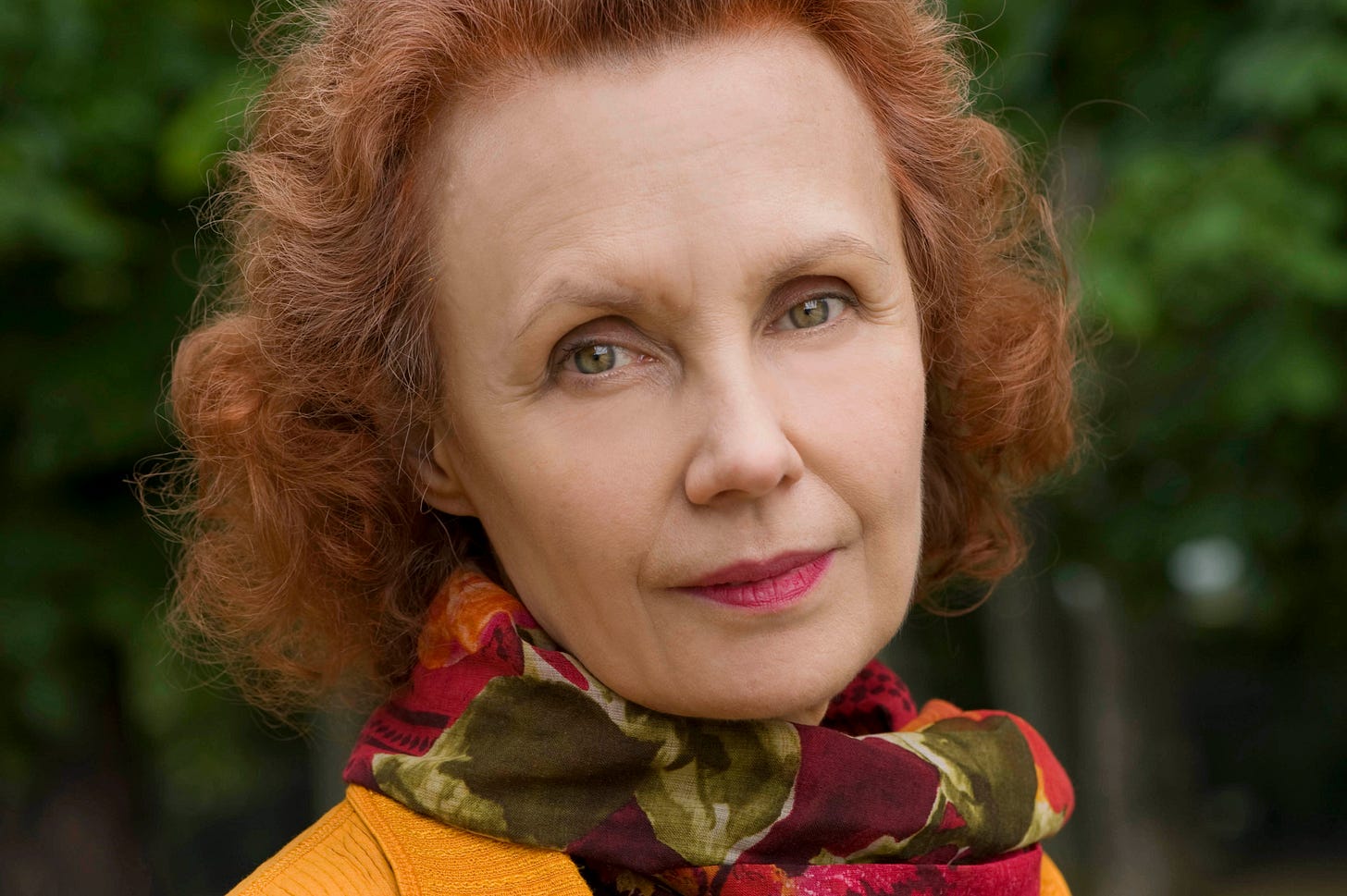[See if you can discern any common theme running through the selections in this installment.]
1. Kaija Saariaho (1952-2023), La passion de Simone: When Saariaho passed away earlier this year, it was hard not to feel that a particularly rich epoch in Finnish music was coming to a close. Sallinen still remains, of course, but he is, as the Bible would put it, full of years. Mind you, Saariaho was as much a French as a Finnish composer; the better part of her career she lived in Paris, and she was very much both a product and a pillar of avant garde French musical culture. Still, she fell very recognizably into a Finnish—and, more broadly speaking, northern European—musical milieu. I am not sure quite how to define it, except to say that it involves orchestral sonorities at once rich and oddly austere, explored over large intervals of development, thematic or aural; and, of course, since the time of Sibelius, it has been impossible not to perceive (or imagine) some sort of natural connection between “that kind” of sound and vast, cold, largely unpopulated Scandinavian landscapes. That said, while Saariaho may have often worked within that “school,” she also altered and expanded its curriculum. On the one hand, she was a boldly experimental and innovative composer, fascinated by the new tonal textures that could be created by the fusion of traditional and electronic instrumentation; much of her work expanded upon the early “spectralism” of Gérard Grisey and others, and in many ways raised the whole odd genre of “computer music” to a far higher plane of accomplishment than any of her contemporaries had. On the other hand, she was entirely at home in the whole Western musical tradition, perfectly and frequently willing to employ the resources of traditional tonality and development. From early on in her career, and in fact even as a student in Helsinki, her artistic inclinations were guided by a refusal to compose, as she put it, “by negations” of the past. Still, her style was her own. She had a special gift for creating sonic atmospheres through gradual and cumulative transitions of tone-clusters, producing effects reminiscent of figures as diverse as Rautavaara, Partch, and Ligeti—but only reminiscent. At its very best, her music has an eerie remoteness about it that has the feel of a striving after timelessness. La passion de Simone is a late work and probably her masterpiece: an oratorio drawn from the writings and biography of Simone Weil, with whose asceticism, spiritual fervor, and purity of vision Saariaho had been fascinated for many years. It is modeled upon Lenten passion plays and is arranged in a sequence of fifteen “stations,” like the stations of the cross, each of which is something of a meditation on the contradictions suffered by Weil between the life of the mind and the life of the flesh. It is an entrancing work—somber, bleak, and captivatingly unusual (rather like its subject). In its original form, the oratorio is scored for spoken voice, solo soprano, full orchestra, choir, and electronic instruments, but Saariaho later created a chamber arrangement in which the soloist and speaker are accompanied only by a nineteen-piece ensemble, without any electronics, and this has apparently proved the more popular version (at least, it is the more regularly performed, perhaps because it is easier to stage). The only recording, however, is of the original, available as an Ondine release from 2013, performed by the Finnish Radio Symphony Orchestra and Tapiola Chamber Choir under the baton of Esa-Pekka Salonen, and featuring the good, great, and glorious Dawn Upshaw (for whom the solo part was originally written).
Keep reading with a 7-day free trial
Subscribe to Leaves in the Wind to keep reading this post and get 7 days of free access to the full post archives.




